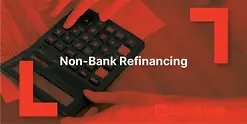Understanding Break Fees: Are They Worth Paying to Refinance?
 By
Trent Bradley
·
14 minute read
By
Trent Bradley
·
14 minute read

Break fees are often the biggest obstacle preventing New Zealand homeowners from refinancing their mortgages, even when significantly better rates are available. These fees can range from a few hundred dollars to tens of thousands, depending on your circumstances and market conditions. Understanding how break fees work, when they apply, and how to evaluate whether paying them makes financial sense is crucial for making smart refinancing decisions.
Table of Contents
- What Are Mortgage Break Fees?
- How Banks Calculate Break Fees
- Evaluating Whether Break Fees Are Worth Paying
- Strategies for Minimizing or Avoiding Break Fees
- When Break Fees Are Definitely Worth Paying
- When to Avoid Paying Break Fees
- Getting Accurate Break Fee Quotes
- Making Your Final Decision
- Frequently Asked Questions
Key Takeaways
- Break fees compensate banks for lost interest income when you exit fixed-rate mortgages early, calculated based on the difference between your current fixed rate and current wholesale rates multiplied by your remaining loan balance and fixed term duration
- Break fees range from zero (when rates have risen above your fixed rate) to tens of thousands of dollars when rates have fallen significantly—a $450,000 loan with 2 years remaining and 1.3% rate differential generates approximately $11,700 in break fees
- Calculate your break-even point by dividing total break fees by monthly interest savings—if you save $250 monthly with an $8,000 break fee, you'll break even in 32 months and benefit from savings thereafter
- Break fees are definitely worth paying when achieving 1%+ rate reductions with long terms remaining (15+ years), consolidating high-interest debt, or accessing critical equity—monthly savings of $1,000+ typically justify even $15,000 break fees within 12-18 months
- Avoid paying break fees when less than 6 months remain on your fixed term, rate improvements are marginal (under 0.3%), or you have uncertain property plans that might require selling before reaching break-even
- Time refinancing strategically by monitoring fixed term expiry dates, negotiating with your current lender for fee waivers when staying with them, or waiting for rate rises that eliminate break fees entirely
This comprehensive guide will demystify break fees, explain how banks calculate them, help you determine whether paying a break fee is worthwhile, and provide strategies for minimizing or avoiding these costs altogether.
What Are Mortgage Break Fees?
Break fees, also called early repayment costs or break costs, are charges imposed by lenders when you exit a fixed-rate mortgage before the end of your agreed fixed term. These fees compensate the bank for the interest income they expected to receive over the remainder of your fixed period.
Why Do Break Fees Exist?
When you fix your mortgage rate, your bank secures funding in wholesale markets at specific rates to match your loan term. They've made financial commitments based on the expectation that you'll maintain your mortgage at the agreed rate for the full fixed period. If you break this agreement early, the bank may face losses because they still have obligations in wholesale markets but no longer have your loan generating the expected interest income.
Break fees protect banks from these potential losses and discourage borrowers from constantly switching mortgages whenever rates drop marginally. Without break fees, the fixed-rate mortgage system would be unsustainable because borrowers would always refinance at the first sign of lower rates while banks would be left holding expensive wholesale funding commitments.
When Do Break Fees Apply?
Break fees typically apply in several situations. The most common is when you refinance to a different lender before your fixed term ends. If you're switching from one bank to another and you're currently in a fixed-rate period, you'll almost certainly face break fees.
Selling your property before your fixed term expires usually triggers break fees, unless your mortgage is portable and you can transfer it to your new property. Even if you're not leaving your lender entirely, breaking your fixed term early to switch to a different rate or loan structure within the same bank often incurs break fees.
Some homeowners are surprised to learn that even paying off your mortgage completely—perhaps after receiving an inheritance or selling an investment—can trigger break fees if done during a fixed-rate period.
When Break Fees Don't Apply
Break fees don't apply to floating rate mortgages, which is one of their key advantages. You can refinance, make extra repayments, or pay off a floating rate loan entirely without penalty at any time.
Once your fixed term expires and you're between fixed periods, you can refinance without break fees. This makes the end of your fixed term the ideal time to shop around and refinance if better rates are available. Most New Zealand lenders allow you to make some extra repayments on fixed-rate loans, typically between ten to twenty percent of your original loan amount annually, without incurring break fees. Payments within these limits won't trigger charges.
How Banks Calculate Break Fees
Understanding how break fees are calculated helps you anticipate costs and evaluate whether refinancing makes sense. While the exact formulas vary slightly between banks, the underlying principles are consistent across New Zealand lenders.
The Basic Formula
Break fees are calculated based on the difference between the interest rate you're currently paying and the interest rate the bank can now earn by reinvesting the money for the remainder of your original fixed term. If current rates are lower than your fixed rate, you'll pay a break fee. If current rates are higher than your fixed rate, you typically won't pay anything because the bank can reinvest at better rates.
The formula essentially looks at your remaining loan balance, multiplies it by the interest rate difference, calculates this over the remaining term of your fixed period, and applies a present-value adjustment to account for receiving the money earlier than expected.
Key Factors Affecting Break Fee Amounts
Several variables influence how much your break fee will be. The size of your remaining loan balance is directly proportional to your break fee—larger loans generate larger fees. The length of time remaining on your fixed term also matters significantly. The more time left, the higher the potential fee because the interest differential applies over a longer period.
The most critical factor is the difference between your current fixed rate and current wholesale rates for the same remaining term. If rates have fallen dramatically since you fixed, your break fee will be substantial. If rates have fallen only slightly or have risen, your fee will be minimal or potentially zero.
Market conditions at the time you want to break your loan determine wholesale rates and therefore your break fee. These conditions can change daily, meaning your break fee quote is only valid for a short period, typically a few days.
Real-World Break Fee Examples
Let's examine some realistic scenarios to illustrate how break fees work in practice.
Consider Sarah, who has four hundred and fifty thousand dollars remaining on her mortgage with two years left on a fixed term at six point five percent. Current wholesale rates for two-year terms are five point two percent. The rate difference is one point three percent, applied over two years on four hundred and fifty thousand dollars. Her break fee would be approximately eleven thousand seven hundred dollars after present-value adjustments.
Compare this to Michael, who has a similar loan amount and time remaining, but his fixed rate is five point seven percent while current rates are five point five percent. The difference is only zero point two percent, resulting in a break fee of around one thousand eight hundred dollars.
Finally, consider Emma, who fixed at five point eight percent when rates were historically low, but rates have since increased to six point five percent. Because current rates exceed her fixed rate, the bank can reinvest at better rates than she's paying, so her break fee is zero. She can refinance without penalty despite being in a fixed term.
These examples demonstrate how dramatically break fees can vary based on market conditions and your specific loan terms.
Evaluating Whether Break Fees Are Worth Paying
The critical question isn't whether break fees are large or small in absolute terms, but whether the benefits of refinancing outweigh the costs. Here's how to make this evaluation systematically.
Calculate Your Potential Interest Savings
First, determine how much you'll save in interest by refinancing to a lower rate. Calculate your monthly payment at your current rate and at the new rate you can access. The difference multiplied by the number of months remaining on your loan gives you your total potential savings.
For example, if refinancing saves you two hundred and fifty dollars monthly and you have fifteen years remaining, your total potential savings over the full loan term is forty-five thousand dollars. This provides context for evaluating a break fee.
Determine Your Break-Even Point
Divide your total break fee by your monthly interest savings to calculate how many months it will take to recover the break fee cost. If your break fee is eight thousand dollars and you'll save two hundred and fifty dollars monthly, your break-even point is thirty-two months, or approximately two point seven years.
If you plan to stay in your property well beyond this break-even point, paying the break fee makes financial sense. If you might sell or your circumstances might change before breaking even, paying the fee becomes riskier.
Consider the Full Cost Picture
Don't evaluate the break fee in isolation. Add all refinancing costs including application fees, legal costs, and valuation charges to your break fee to determine the total upfront investment required. Your break-even calculation should be based on total costs, not just the break fee.
Also consider what you'll do with the monthly savings. If you'll simply spend them, you get the calculated benefit. If you'll redirect savings toward paying down your mortgage principal faster, you'll actually save more than the basic calculation suggests because you'll reduce the interest charged on your remaining balance.
Factor in Non-Financial Considerations
Sometimes break fees are worth paying even if the pure financial case is marginal. If you're consolidating high-interest debt through refinancing, the immediate cash flow relief might justify break fees even with a longer break-even period. If your current lender has poor service, restrictive terms, or features you dislike, the benefits of switching might outweigh a modest break fee.
Conversely, the hassle and time investment of refinancing might not be worthwhile if your break-even point is very long or if break fees are extraordinarily high.
Strategies for Minimizing or Avoiding Break Fees
Several strategies can help you reduce or eliminate break fees when refinancing, making it easier to take advantage of better mortgage deals.
Time Your Refinance Strategically
The most effective strategy is refinancing when your fixed term naturally expires. Start shopping for new rates three to six months before your fixed term ends. You can secure rate commitments from new lenders that become effective when your current term expires, allowing you to transition seamlessly without break fees.
If you have multiple fixed-rate splits with staggered end dates, focus on refinancing the portions that are expiring while leaving others in place until their terms end. This lets you gradually move to better rates without paying break fees on your entire loan.
Consider Waiting if Break Fees Are Extreme
If your break fee calculation shows an extraordinarily high cost—perhaps exceeding five figures—and you're relatively close to your fixed term expiration, waiting might be the better strategy. Run the numbers comparing the cost of waiting versus paying the break fee immediately.
For example, if your break fee is fifteen thousand dollars but your fixed term ends in eight months, you'd need to save more than one thousand eight hundred and seventy-five dollars monthly to justify paying the fee rather than waiting. If your monthly savings is only three hundred dollars, waiting makes more financial sense.
Negotiate with Your Current Lender
Sometimes your existing bank will waive or reduce break fees if you refinance to a new fixed term with them rather than leaving for a competitor. This isn't guaranteed, but it's always worth asking, especially if you've been a loyal customer with a good payment history.
Banks would rather keep your business by waiving fees than lose you to a competitor. Tell them you're considering refinancing elsewhere and ask what they can do to retain you. You might be surprised by their willingness to negotiate.
Use Rate Changes to Your Advantage
If interest rates rise after you fixed your rate, your break fee disappears or becomes minimal. Monitor rate trends, and if rates increase, that's an ideal time to refinance without facing substantial break fees. This is one of the few situations where being locked into a lower fixed rate while rates rise actually provides a hidden benefit.
Consider Splitting Your Mortgage
When initially setting up or refinancing your mortgage, consider splitting between fixed and floating portions. This strategy gives you flexibility to make extra payments or refinance the floating portion without break fees while still enjoying rate stability on the fixed portion.
If rates drop significantly, you can refinance just the floating portion immediately to lock in lower fixed rates without paying break fees on your entire loan balance.
Portable Mortgages
Some New Zealand lenders offer portable mortgages that allow you to transfer your existing fixed-rate loan to a new property if you're selling and buying simultaneously. While this isn't traditional refinancing, it lets you avoid break fees when moving homes. Ask potential lenders about portable mortgage options if you anticipate moving before your fixed term expires.
When Break Fees Are Definitely Worth Paying
Despite their reputation as obstacles to refinancing, break fees are definitely worth paying in certain circumstances where the benefits clearly outweigh the costs.
Large Rate Reductions with Long Terms Remaining
If you're locked into a high fixed rate with many years remaining and can refinance to a rate more than one percentage point lower, break fees are usually worthwhile. The cumulative savings over the remaining loan term will almost certainly exceed even substantial break fees.
For instance, if you have twenty years remaining on a five hundred thousand dollar mortgage at seven percent and can refinance to five point five percent, you'd save approximately one thousand four hundred dollars monthly. Even a break fee of fifteen thousand dollars would be recovered in less than eleven months, with nineteen years of savings to follow.
Debt Consolidation Opportunities
When refinancing to consolidate high-interest credit card or personal loan debt, break fees are often easily justified by the immediate savings on high-interest debt. If you're paying twenty percent interest on twenty thousand dollars in credit card debt, you're spending four thousand dollars annually in interest. Consolidating this into your mortgage at six percent costs only one thousand two hundred dollars annually, saving two thousand eight hundred dollars per year.
Even a break fee of five thousand dollars is recovered in less than two years through debt consolidation savings alone, not counting any savings from a lower mortgage rate.
Accessing Critical Equity
If you need to access equity in your home for important purposes—such as medical expenses, essential home repairs, or investment opportunities with strong returns—break fees might be the cost of accessing this capital. Compare break fees against alternative funding sources like personal loans or credit cards, which would likely be far more expensive.
Escaping Unfavorable Loan Terms
Some older or specialist mortgages have restrictive terms, high ongoing fees, or limited features. If your current mortgage significantly constrains your financial flexibility or charges high fees, break fees might be worthwhile to escape these restrictions even if interest rate savings are modest.
When to Avoid Paying Break Fees
Conversely, some situations clearly indicate that paying break fees doesn't make financial sense.
Short Remaining Fixed Terms
If you have less than six months remaining on your fixed term and break fees exceed a few thousand dollars, waiting is almost always more economical. The savings from a marginally lower rate over such a short period rarely justify substantial break fees.
Marginal Rate Improvements
If the rate reduction you can achieve is small—say, zero point two to zero point three percent—and break fees are more than nominal, the extended break-even period makes refinancing questionable. Your savings might not materialize before your circumstances change or before you would naturally refinance anyway.
Uncertain Future Plans
If you're unsure whether you'll sell your property soon, change jobs, or experience other major life changes, paying substantial break fees to refinance introduces unnecessary risk. You might break even in theory after several years, but if your plans change before reaching that point, you'll have paid fees without realizing the offsetting benefits.
Alternative Options Available
If you can achieve your goals through restructuring with your existing lender—switching portions from fixed to floating as they expire, accessing equity without refinancing, or adjusting your loan structure—you might accomplish what you need without the break fees associated with changing lenders.
Getting Accurate Break Fee Quotes
Break fees aren't always transparent, and quotes can vary based on how and when you request them. Here's how to get accurate information about potential break fees.
Contact Your Lender Directly
Call your current lender's mortgage department and specifically request a break fee calculation. Provide your loan number and explain that you're considering your options and need to understand the cost of exiting your fixed term early. Banks are required to provide this information upon request.
Ask for the calculation in writing via email so you have documentation. Break fee quotes are typically valid for a limited period, often just a few days, because they're based on current wholesale market rates that change continuously.
Request Detailed Calculation Breakdown
Don't just accept a single dollar figure. Ask your lender to explain how they calculated the break fee, including what wholesale rate they used for comparison. This transparency helps you understand the quote and enables you to verify it's reasonable. Some banks provide detailed calculation explanations as standard practice, while others require you to specifically request this information.
Compare Multiple Scenarios
If you're considering different refinancing timeframes, request break fee quotes for different potential dates. This might reveal that waiting a few weeks or months could substantially reduce your break fee as your remaining fixed term shortens.
Factor in Market Volatility
Remember that break fees fluctuate with market conditions. If wholesale rates are volatile, your break fee quote might change significantly within days. If you receive a favorable break fee quote during a period of market volatility, consider acting quickly before conditions change.
Making Your Final Decision
Evaluating whether break fees are worth paying requires balancing multiple factors and making informed calculations based on your specific circumstances.
Start by getting accurate quotes for both your potential break fee and the new interest rates available to you. Calculate your break-even point carefully, factoring in all refinancing costs, not just the break fee. Consider your future plans realistically—will you definitely be in your home long enough to exceed your break-even point?
Evaluate the total financial impact over different time horizons: one year, three years, and the full remaining loan term. This provides perspective on when refinancing becomes beneficial. Don't forget to consider non-financial factors like improved loan features, better service, or the peace of mind that comes from optimizing your mortgage.
If you're uncertain, consult with a mortgage adviser who can provide objective analysis. At Luminate Financial Group, we help New Zealand homeowners navigate these complex decisions every day, providing detailed break fee analysis, comparative scenarios showing costs and benefits over various timeframes, and guidance on optimal timing and strategy for your specific situation.
Break fees can seem daunting, but they shouldn't automatically prevent you from refinancing when it makes financial sense. By understanding how they work and carefully calculating whether the benefits justify the costs, you can make confident decisions that improve your financial position over the long term.
Frequently Asked Questions
How much will my break fee be if I refinance right now?
Break fees vary dramatically based on your specific loan details and current market conditions—only your lender can provide accurate quotes valid for 3-7 days. Contact your current lender's mortgage department requesting a written break fee calculation including your loan number, remaining balance, current fixed rate, time remaining on fixed term, and current wholesale rate comparison. Break fees of $0-$2,000 are common when rate differentials are small (under 0.3%) or when rates have risen since you fixed. Break fees of $5,000-$15,000+ occur with large rate differentials (1%+) on substantial loan balances ($500,000+) with long remaining fixed terms (2-5 years).
Can I negotiate or reduce my break fee with the bank?
Banks rarely waive break fees entirely when you're switching to a competitor, as they're compensating for genuine wholesale funding losses. However, your current lender may waive or reduce break fees if you refinance to a new fixed term with them rather than leaving—they'd rather retain your business than lose you to competitors. Approach your bank explaining you're considering refinancing elsewhere due to better rates, and ask what they can offer to retain you including potential break fee waivers, rate matching, or reduced fees. Long-term customers with excellent payment histories and high equity (LVR under 60%) have strongest negotiating positions.
If I have 6 months left on my fixed term, should I just wait?
Waiting is almost always more economical with under 6 months remaining unless break fees are under $1,000-$2,000 or rate savings exceed $400+ monthly. Calculate break-even: if break fees are $5,000 and you'd save $250 monthly by refinancing immediately, you need 20 months to break even—but you're refinancing anyway in 6 months when your term expires. You'd save only $1,500 during those 6 months while paying $5,000 in break fees, creating a net $3,500 loss. Instead, start shopping 3-4 months before fixed term expiry, secure rate commitments from new lenders, and transition seamlessly when your term ends without paying any break fees.
Do I pay break fees if I sell my house to buy another one?
Yes, selling during a fixed term typically triggers break fees unless your lender offers portable mortgages allowing you to transfer your existing fixed rate to your new property. Portable mortgages avoid break fees when you're buying and selling simultaneously with the same lender and loan amount remains similar. If your lender doesn't offer portability or you're significantly changing loan amounts, you'll pay break fees based on the standard calculation. Some buyers time property sales to coincide with fixed term expiries, but this often proves impractical given property market timing. Budget for potential break fees of $5,000-$15,000+ when selling during fixed terms on typical mortgage sizes.
What if interest rates drop again after I pay break fees to refinance?
You'll be locked into your new fixed rate and would face new break fees to refinance again—this is why shorter fixed terms (1-2 years) provide more flexibility than 3-5 year terms despite typically offering slightly higher rates. Consider splitting your mortgage when refinancing: fix 70-80% for stability while keeping 20-30% floating for flexibility. If rates drop further, you can immediately benefit on the floating portion without break fees while your fixed portion provides payment certainty. Alternatively, use laddering strategies fixing different amounts for different terms (e.g., $200k for 1 year, $200k for 2 years, $100k floating) creating regular opportunities to reassess without facing large break fees on your entire balance.
Are break fees tax deductible for investment properties?
Break fees paid on investment property mortgages are generally tax deductible as they're considered costs of earning rental income, though tax treatment can be complex depending on specific circumstances. Consult your accountant for confirmation based on your situation, but typically break fees are deductible either in the year paid or spread over the remaining original fixed term period. This deductibility reduces the effective cost of break fees for investment property owners—a $10,000 break fee costs only $6,100 after tax for investors at 39% marginal rate. Factor this tax benefit into your break-even calculations when evaluating whether refinancing investment properties makes financial sense despite break fee costs.
Wondering if your break fees are worth paying to refinance? Contact Luminate Financial Group for a comprehensive break fee analysis and refinancing evaluation. We'll help you understand your costs and determine the best strategy for your situation.

Trent Bradley
Trent Bradley is a New Zealand financial advisor specializing in property-backed finance and investment consulting. With over 26 years of experience running his mortgage broking business, he has helped wholesale investors access high-yield property-backed loan opportunities. For the past 12 years, Trent has led Luminate Finance, a New Zealand finance company dedicated to connecting investors with secure property investment solutions.
































